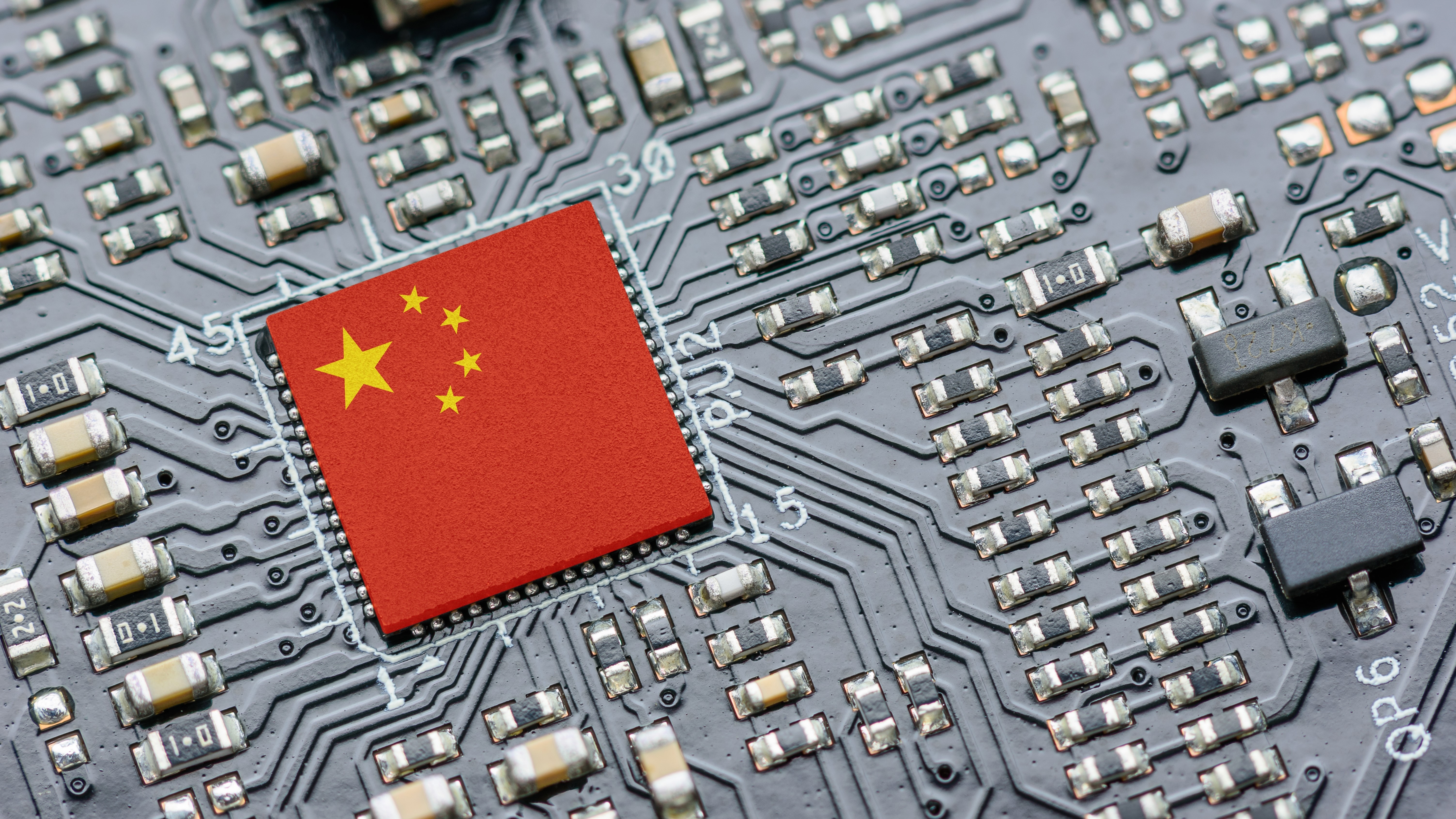Chinese chip industry leader asks companies to focus on building innovations using mature nodes
Chinese tech firms should focus on legacy chips and 3D packaging instead of cutting-edge process nodes.

The US is actively blocking China from acquiring the latest technologies, with Washington stopping the export of advanced chips and chipmaking tools to the Asian power. Due to this technological blockade, DigiTimes Asia reported that Ye Tianchun, the President of the Integrated Circuit Branch of the China Semiconductor Industry Association (CSIA) and Secretary-General of the China Integrated Circuit Innovation Alliance (CICIA) is encouraging companies to focus on building innovations in mature nodes and back-end technologies. This focus should take precedence over trying to catch up with Western and Western-allied semiconductor companies like Intel, Nvidia, and TSMC.
Although China is working hard to develop homegrown chips, with Chinese CPU-maker Loongson releasing processors that match 10th-gen Intel chips in April, it is still at least five years behind the performance of current chips from AMD, Intel, and Qualcomm. The US is also blocking ASML from servicing its lithography systems in China, negatively affecting China’s top foundry, SMIC.
China-based Shanghai Micro Electronic Equipment Group (SMEE) already makes lithography tools, with another one, Naura Technology, looking to break into the industry as well. However, they are still far behind ASML’s capability to produce chips for the latest nodes. Unless China can find a way to overcome these challenges in three to five years, it risks falling behind in cutting-edge chips against its Western rivals.
Ye Tianchun believes that China could forge a new path towards technological superiority. Instead of following the top global chipmakers, like TSMC, into the nanometer race, he suggests that Chinese companies should instead focus on more mature nodes and architectural innovation.
After all, out of the 12 million 12-inch wafers that TSMC makes annually, almost 80% of those use older nodes instead of the cutting-edge designs on the latest SoCs. American sanctions have made China one of the leaders in mature-node chips; so, it makes sense for China to play to its core strengths and pivot towards producing high-quality legacy chips that most, if not all, electric and electronic equipment needs.
Tianchun also recommends focusing on architectural innovations and back-end processes. As Moore’s Law suggests that 3nm and 2nm chips are hitting current architectural limitations, companies like Arm and Samsung seek new advancements to maximize transistor density. Since Chinese semiconductor firms are still a few years away from this technology, he said that they should consider working on architecture innovations as early as 7nm. Chip designers should work with system packaging firms to deliver these innovations, allowing them to gain a comparative advantage in this field.
Many Chinese tech companies want to follow into the nanometer race that companies like Intel, AMD, Nvidia, and Qualcomm have long since dominated. However, China will have a difficult time catching up to these tech companies, especially as the US is blocking it every step of the way. So, instead of following them, Chinese tech companies should forge their own path and create innovations for technologies that the US and its allies are neglecting.
Get Tom's Hardware's best news and in-depth reviews, straight to your inbox.

Jowi Morales is a tech enthusiast with years of experience working in the industry. He’s been writing with several tech publications since 2021, where he’s been interested in tech hardware and consumer electronics.
-
Diogene7 China should allocate early more funding to develop spintronic related technologies like Non-Volatile-Memory (NVM) MRAM because it would provide them the opportunity to take technological leadership in beyond CMOS technologies. It is basically what they did with EVs, batteries, solar panels,…Reply -
jp7189 On the face of it, less efficient tech can keep pace for a while as long as there's sufficient energy and money propping it up. From reports, China is deploying more nuclear energy than anyone else, and I personally think that's the key tech for enabling the monster datacenters everyone is after. US will fall behind if energy deployment lags too far behind, but there's a strong push against it.Reply -
Diogene7 Reply
Although it will definitely be a helpful tool, I am not a big believer in the digital AI as it is done at the moment : it is very, very energy inefficient and has its limits.jp7189 said:On the face of it, less efficient tech can keep pace for a while as long as there's sufficient energy and money propping it up. From reports, China is deploying more nuclear energy than anyone else, and I personally think that's the key tech for enabling the monster datacenters everyone is after. US will fall behind if energy deployment lags too far behind, but there's a strong push against it.
Somr Intel researchers seems to have shown that spintronics related technologies like Intel MESO concept (or related French research lab Spintec FESO concept) seems more amenable to both digital logic and much more energy efficient ways to do AI.
Therefore China should be investing to develop advanced manufacturing tools to manufacture such technologies as it would allow them to both to sidesteps the US restrictions and leapfrog them (as they did with solar panels, batteries, EVs,…) -
jp7189 Reply
I'm not saying it's a great idea to deploy less efficient tech, but that seems to be the option China is left with for now. I am saying they have an advantage in the rapid deployment of nuclear energy. spintronics is 10+ and probably more like 20+ years from being commercially viable. A lot can change in that much time.Diogene7 said:Although it will definitely be a helpful tool, I am not a big believer in the digital AI as it is done at the moment : it is very, very energy inefficient and has its limits.
Somr Intel researchers seems to have shown that spintronics related technologies like Intel MESO concept (or related French research lab Spintec FESO concept) seems more amenable to both digital logic and much more energy efficient ways to do AI.
Therefore China should be investing to develop advanced manufacturing tools to manufacture such technologies as it would allow them to both to sidesteps the US restrictions and leapfrog them (as they did with solar panels, batteries, EVs,…)
Regarding the other areas you mentioned, solar, batteries, China had a leg up because they were able to exert considerable control on the raw materials that went into those components. That is not the case here. -
Diogene7 Replyjp7189 said:I'm not saying it's a great idea to deploy less efficient tech, but that seems to be the option China is left with for now. I am saying they have an advantage in the rapid deployment of nuclear energy. spintronics is 10+ and probably more like 20+ years from being commercially viable. A lot can change in that much time.
Regarding the other areas you mentioned, solar, batteries, China had a leg up because they were able to exert considerable control on the raw materials that went into those components. That is not the case here.
I think that with proper funding allocation (like they did with battery, EV, solar,…) spintronics related technologies could likely become a much more emergent technology in 10 years, and if so, China would be a leader in manufacturing tools / ecosystem in this technology because they would have been the 1st to develop the necessary new manufacturing tools for this technology…
The 1st step would be to scale-up Non-Volatile-Memory (NVM) MRAM manufacturing on 300mm wafers, with at least 32Gbits (4GB) die, that are LPDDR6 / CXL 2.0 compatible and reasonably low-power enough that it opens plenty new market opportunities.
https://www.imec-int.com/en/press/imecs-extremely-scaled-sot-mram-devices-show-record-low-switching-energy-and-virtually
On the contrary, I am doubtful that it is wise to pursue EUV with a technology that would be much more expensive than ASML EUV, and therefore not market / price competitive…